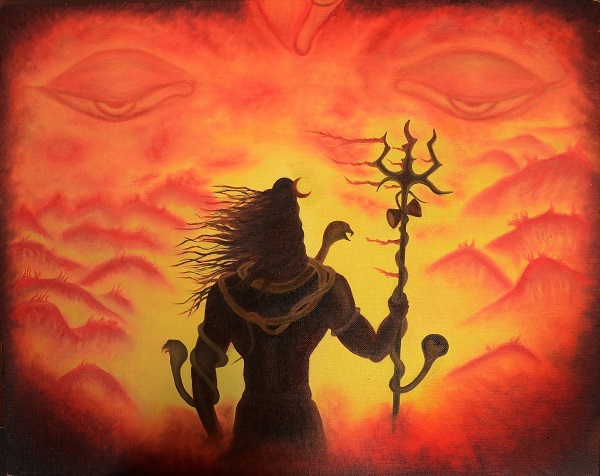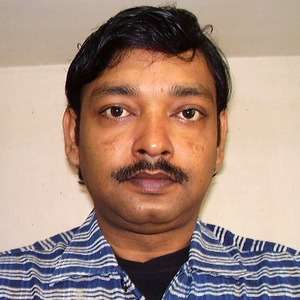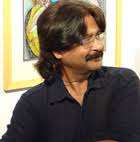
Do you know that in ancient times, India was not a sovereign state but more like an entity that was termed as Bharat Varsha? Yes, people of different ethnicity, religions, and culture came together under the umbrella of Bharat. But why? What was that sense of unity that drove the spiritual ethos of the common man?
That sense of commonness was liberation. India, a country of art, culture, Gods, and Goddesses has always focused on spiritual nourishment and liberation. Even today, you can find a small but considerable amount of population still living on the same notion. This is so because spiritualism was deep-rooted in India thousands of years ago that it blooms the resultant flowers. But, who fused such intense spiritual theory in India?
Understanding Lord Shiva and His Many Forms in Hindu Mythology
It was Shiva, the destroyer, the liberator, and the cosmic dancer, who cultivated the spiritual seeds into this great nation. As per yogic philosophies and beliefs, Shiva was not a God but the very first man who attained the apex rank of Adiguru. It was through intense meditation that Shiva attained that universal realization or the transcendence mode. Through internal and external awareness, Shiva became ecstatic that made him dance all over the mountains or remain static till thousands of years.
Shiva is universal. Ask anyone to elucidate Shiva, no one can. This is the true charm of Shiva that it exists everywhere and in everyone. The first Adiyogi who laid the foundation for Yoga and discovered the true power of the human body can be seen in a number of artworks today.
Artists just love to picture Lord Shiva paintings because of the roots that are incepted deeply in our culture and beliefs. What are your favourite artworks of Shiva? Is it an artefact depicting the Nataraja’s pose or just the generic manifestation of Shiva? Whenever I visit a renowned art gallery website, I am just stumped seeing so much demand for Shiva paintings online.
No doubt, Shiva is one of the most popular Godly figures in India. Although his life still remains a mystery, artists have never shied away to dig out the pieces from Lord Shiva’s story.
Writers like Amish Tripathi have already gained immense fame by publishing Shiva trilogy in the year 2010. His first edition, “The Immortals of Meluha”, was one of the bestselling books in India.
Decoding Lord Shiva Paintings
First of all, Shiva is nothing but everything. It means that the attempts that the artists are making to transform the Shiva into human form are merely a way to make people comprehend with the characteristics or the lessons that he wanted to teach humanity.
One form of Shiva that is mostly seen in a lot of artworks today is him with a crescent moon on his head, damru in one hand, trident in other, a serpent around the neck, third eye, and the bull that he rode.
Of course, all of you might have encountered this form quite a few times in Lord Shiva paintings or in some video representations but do you know the real meaning of this specific manifestation. As said, “Nothing in this world is pointless”, so is the materialisation of Shiva.
Moon
The crescent moon on Shiva’s head represents mind. Now, Shiva is nothing means no mind too. Then why is this crescent moon showcased? The thing is that the state of no-mindedness can only be attained with a little bit of mind to comprehend with. Infinite consciousness, ironically, cannot be acquired without that slightest mind to express itself in the physical world. This is why a crescent moon is depicted.
Damru
This is my favourite. We all have witnessed the ‘Tandava’ dance of Shiva in numerous movies, artworks, and videos. Shiva is seen playing damru as he performs the pious cosmic dance. This damru represents that our universe is constantly expanding and collapsing. The sound of damru is said to be the sound of creation and destruction both.
For instance, when you witnessed a heartbeat, it is not a straight line but is a rhythmic movement that goes up & down repetitively. As per Shiva, his damru presents the similar state of our universe, which is exactly like the heartbeat; a beat of energy that goes up and then comes down. Strangely, if you closely watch the shape of damru, it also indicates collapse from expansion and expansion from the collapse. Damru also tells us that the entire world is a wave function i.e. made up of rhythms.
Serpent
When you are immersed in deep meditation, except the inner sky of consciousness, no action exists, just an awareness. To represent this alertness or awareness, artists have represented a serpent wrapped around the neck in Lord Shiva paintings.
Trident
Trident or the ‘Trishul’ that Shiva holds in his other hand have multiple interpretations. For some, the trident is a symbolism of three states of consciousness, i.e. waking, dreaming, and sleeping.
On the other hand, Trident also signifies the three gunas named as Satva, Rajas, and Tamas. Since Shiva is seen holding this trident in his hand, it indicates that he is certainly above the states of consciousness and can control all the 3 states.
River Ganga
The flow of river Ganga from the headlocks of Shiva signifies knowledge. Since knowledge is movement and is liberating, it is represented in form of a river.
Third Eye
It offers us the teaching that it is we who can maintain a balance between desire and transcendence mode.
Bull
The bull on which Lord Shiva rides is a symbol of righteousness.





















